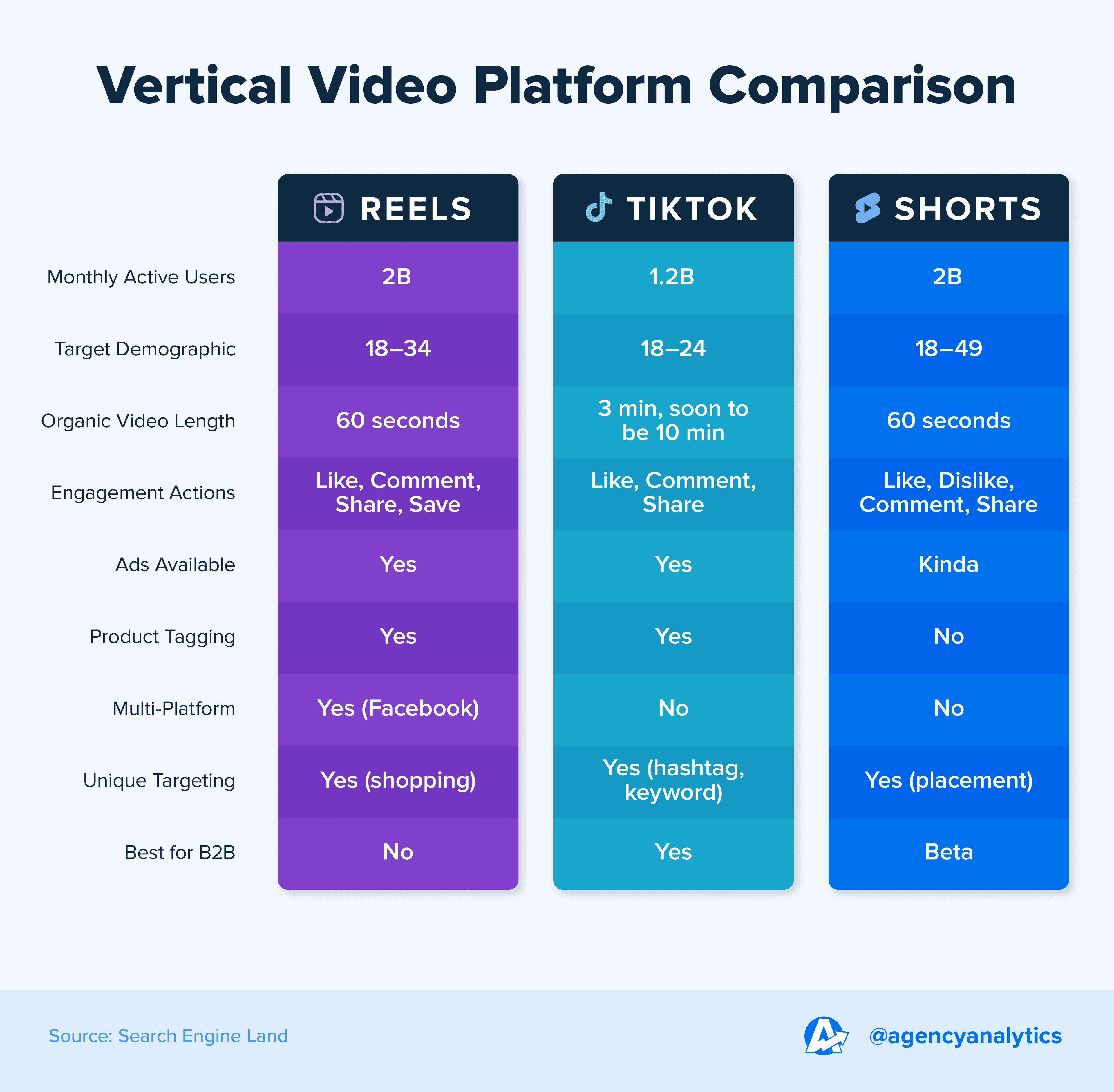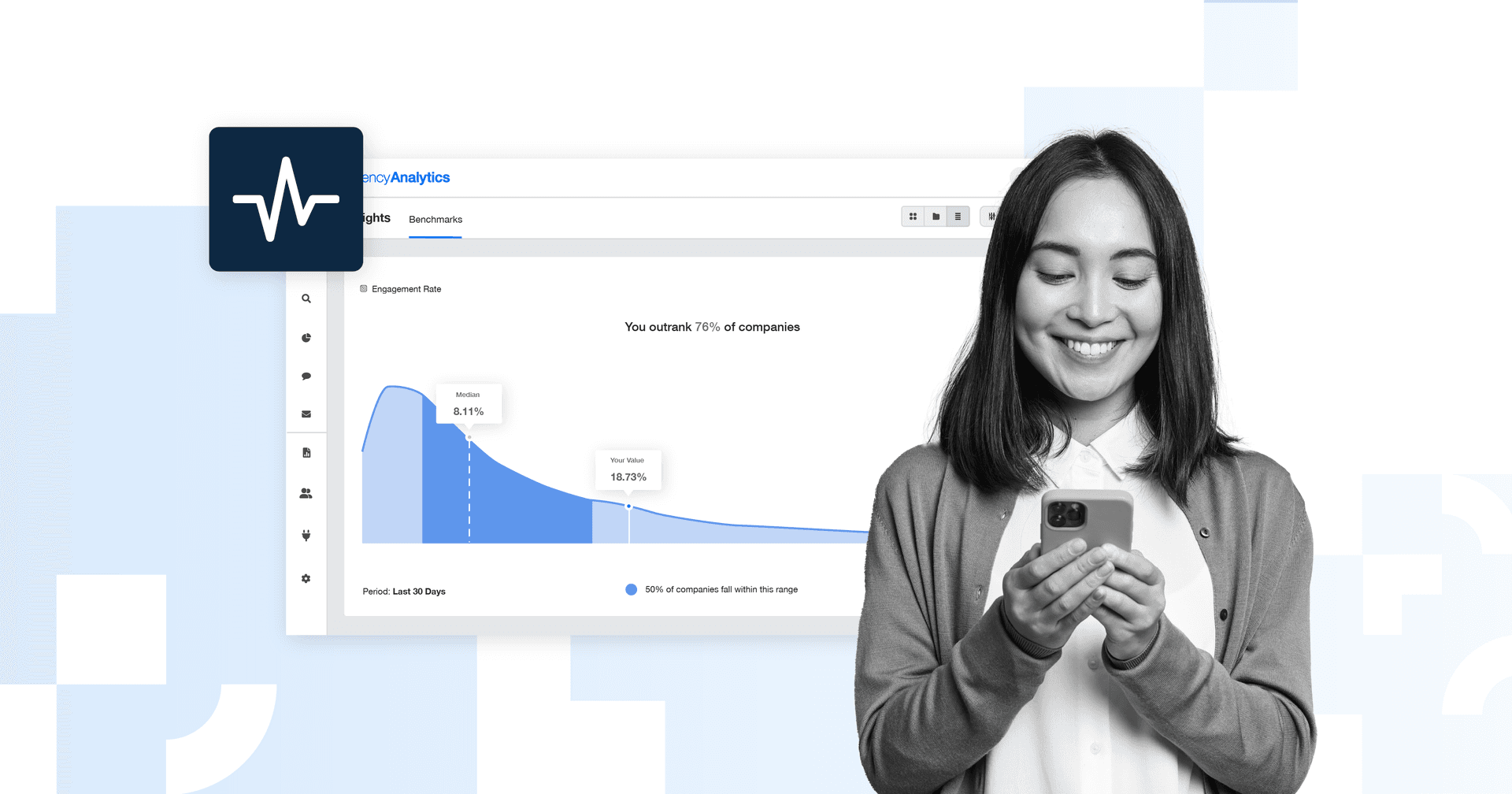Table of Contents
Table of Contents
- The Death and Rebirth of Commercials
- 1. Be Compelling or Get Out
- 2. Make It for Mobile First
- 3. Make It Short and Then Cut It Shorter
- 4. Be Bold by Being Quiet
- 5. Pull Out All the Stops for User-Generated Content
- 6. If You’re Not Filming Your Podcasts, What Are You Doing?
- 7. Get on TikTok Even if You’re B2B
- Marketing Agencies Need to Capitalize on Video Marketing Trends
7,000+ agencies have ditched manual reports. You can too.
Free 14-Day TrialQUICK SUMMARY:
Video advertising trends reflect shifts in consumer behavior and technology. Staying ahead of these trends is essential for optimizing ad campaigns. This article shares key video marketing trends, emphasizing their impact on audience engagement and cost efficiency.
It’s no spoiler to say that digital marketing moves at a breakneck pace. We all know that. When it comes to producing marketing content, it’s not enough to merely catch up to the formats and platforms that are dominating attention in today's rapidly evolving digital landscape; getting ahead of the latest video advertising trends is crucial for marketing agency owners and leaders.
With the stratospheric rise of social media and the increasing popularity of video content, it's important to understand the shifts in consumer behavior and adapt advertising and content marketing strategies accordingly–particularly at a time when many of your clients may be tightening their purse strings and hoping to make their marketing dollars go further.
In this article, we'll explore the latest digital video marketing trends for 2023 that are reshaping the way businesses communicate online and dole out some tough love as to how marketing agencies should leverage them for their clients' success.
Video used to be out of reach for smaller businesses, but not anymore. With the right creatives, it's an incredibly versatile and rewarding service that your clients will love.
Michelle van Blerck, Communications Manager, Digital Freak
The Death and Rebirth of Commercials
Before we dive into the video marketing trends, here’s some much-needed context. Gone are the days when consumers could be easily swayed by traditional commercials. With the advent of streaming services and ad-blocking technologies, people now have more control over the content they consume.
This isn’t a bad thing, in part because creating video content has become more accessible than ever. What was once a medium reserved for big companies with big budgets is now available to everyone, including entrepreneurs, start-ups operating out of mom’s basement, and small to mid-size marketing agencies who haven’t yet nabbed a packed roster of multimillion-dollar clients.
Though the traditional commercial is certainly on the decline, digital video ads are on the rise. Not only does Google claim that paid video ads on YouTube are 84% more effective than a traditional TV commercial, but according to Statista projections, video advertising are on track to be an industry worth over $120 billion USD by 2024, and 82.5% of all web traffic is video.
Video advertising is the best medium to show off a brand's personality and the benefits of a product or service.
Paul Echols, Creative Director + Agency Owner, Square205
The old method was essentially screaming “WE WANT YOU TO BUY THIS! HERE’S WHY YOU SHOULD!” during a scheduled time slot. And while advertising agencies certainly tried to make their commercials powerful, shocking, cheeky, or otherwise memorable, today’s savvy content consumers expect a different kind of information, tone and formatting in order to be persuaded not to click away–or better yet, to be persuaded to engage with and share your content.
All that to say, video marketers need to keep up with video marketing trends. That means finding new ways to engage their clients’ target audiences. Instead of interrupting viewers with video ads, marketing agencies are often turning to branded content that seamlessly integrates brands into storytelling. By creating compelling narratives that resonate with the audience, video marketers can capture attention and build brand affinity.
Quickly and easily highlight video success on YouTube with a custom YouTube dashboard template. Check it out for yourself, get your 14-day free trial today!
This brings us to our first tough love item on the agenda:
1. Be Compelling or Get Out
About 2,500 new videos are uploaded to YouTube every minute. It’s a staggering amount of content competing for your viewers’ eyeballs–and that’s just one platform. In a digital sea of countless videos, we cannot overstate the importance of creating content that stands out and captivates viewers’ attention. As a marketing agency, you have a duty to produce quality content that provides value to–and resonates with–your clients’ audiences.
If your employees are struggling to clearly and succinctly explain how the proposed marketing campaigns or content will connect with audiences on a deeper level, it’s time to take a step back and reassess. Because if the audience doesn’t find the content compelling, the proof will be in lackluster results, and there won't be a point to get on video marketing trends at all.
Agency Tip: While it comes as no surprise that the majority of survey respondents said they use TikTok to find entertainment, there’s a growing number of people using TikTok for informal education. In fact, 28% of TikTok users in the US and UK say that they use TikTok to learn new things. What does this mean for marketing agencies? That they should be looking for opportunities for their clients to produce teaching content.
2. Make It for Mobile First
In 2022, almost 40% of worldwide video ad impressions were on mobile, slightly more than the impressions of users on connected TVs and far more than users on desktops. As mobile devices become the primary platform for video consumption, the demand for vertical video has surged.
Vertical videos, which are filmed and viewed in a portrait orientation, provide a more immersive and user-friendly experience on smartphones. Stop asking your viewers to flip their phones sideways! They don’t want to. And this format is key for shoppable videos.
We love using vertical videos because it works for consumers–we're all on our mobiles all the time, and social shopping is on the rise. This format provides the easiest and most detailed viewing!
Michelle van Blerck, Communications Manager, Digital Freak
Social media platforms like Instagram Stories and Reels, TikTok, YouTube Shorts, and Snapchat have popularized vertical video formats and drawn away eyeballs from other spaces where horizontal video is still a thing. Marketing agencies must adapt to this trend by producing vertical video advertising that fits seamlessly into the mobile browsing experience and create shoppable videos for their eCommerce clients.

3. Make It Short and Then Cut It Shorter
Short form videos and interactive videos are steadily gaining traction in an era of information overload and shrinking attention spans. Platforms like TikTok, Instagram, and Vine (RIP) have popularized the creation and consumption of ultra-short videos–both content and video ads. These bite-sized clips are engaging and easily shareable, typically ranging from a few seconds to a minute (max!). The sweet spot is currently about 15-30 seconds, 10 if you are still building a following.
And if thinking about interactive video makes you groan audibly–we’re sorry. We know shorter content is just as tough to produce–if not tougher–than longer-form content. This isn’t a new complaint. It calls to mind that famous quote, “If I had more time, I would have written a shorter letter” (commonly misattributed to Mark Twain but likely originally from the letters of French philosopher Blaise Pascal). So yes, we acknowledge it: it’s a lot of hard work to make something both brief and compelling. People have been griping about it for literally centuries.
Create a video content and advertising plan that breaks down the information into tiny bursts, such as product features (hello, shoppable videos!) and use cases, unboxings, testimonials, reviews, how-tos, and more. But whatever you do, make sure to keep them bite-sized, and don’t forget to put as much effort into your SEO for maximum impact.
4. Be Bold by Being Quiet
The silent video has been on the rise for some time. It seems counterintuitive, right? Doesn’t your video need music, sound effects, and actual humans to say the lines of the script you worked so hard to condense? In fact, up to 75% of survey respondents said that they’d keep their phones on mute while watching videos. (Consider your own personal mobile use too. How often do you find yourself watching videos silently, whether it’s because you’re in a public space, listening to something else, or simply enjoying the quiet?)
Use this to your advantage. Silent video can be an effective method to streamline your video creation process and trim the fat from your video budget. Just be sure to have strong analytics in place so that you can test what kind of subtitles, closed captions, and/or text overlay perform best with your audience.
5. Pull Out All the Stops for User-Generated Content
User-generated content (UGC) has taken center stage on social media platforms, with consumers being the driving force behind most video content that’s created. Authentic and relatable videos from community members hold immense credibility and resonate with audiences.
That being said, it’s worth noting that plenty of this “authentic” content is still highly planned and produced. The appearance of a casual, low-budget, stream-of-consciousness monologue is highly appealing to audiences, and holds its own against polished, high budget productions.
Marketing agencies should engage with consumers and foster brand advocacy by taking measures to encourage user-generated content creation–though admittedly, this lends itself better to some industries than others.
For example, with all the restrictions in place for certain verticals–such as law firms–it is often a challenge to keep UGC compelling and compliant while staying on board with video marketing trends.
You might consider running marketing campaigns and contests that encourage users to create and share videos related to your clients’ brands. Or, you might foster collaborations with influencers who speak to your target audience. Don’t underestimate the power of user-generated content; putting your best strategic minds on this is worth it.
6. If You’re Not Filming Your Podcasts, What Are You Doing?
Are you squinting at the screen thinking, “Uhm, podcasts aren’t videos!”? Good. Get that thought out of your head right now and never think about it again. You’re a marketing agency leader–and now you know better.
The best marketing content creators find clever ways to make their clients’ content do double, triple, even quadruple duty because that’s not only an efficient work practice, it’s also how you (and your clients) scale and how you reach your audiences where they are.
While podcasts are not a visual medium, don’t overlook them when thinking about video. Podcasts have gained tremendous popularity over the years; the number of weekly podcast listeners is on track to reach just under 115 million by 2025–and that’s just in the US!
Smart marketing agencies are repurposing podcast content into video format, allowing them to reach a wider audience and make use of platforms like YouTube, TikTok, and other social media. By filming podcast interviews or even pairing snippets of stock footage that complement the audio content, agencies can leverage the power of both auditory and visual storytelling.
When a client reached out to us for an on-site video podcast, we quickly assembled our podcast host as well as a team of professional videographers, editors, and the like, so that we could take advantage of this unique opportunity. We're now able to offer this service to a wide range of clients.
Danny Star, CEO and Founder, Website Depot
7. Get on TikTok Even if You’re B2B
Your team may be concerned that they’ll get pushback from clients if you propose a video marketing strategy that includes (or prioritizes) TikTok. Perhaps your clients will say, “My grandson’s on TikTok. I don’t see why we need to be on a platform for kids as part of our video marketing strategy! That’s not my target audience.” Or maybe the pushback sounds like, “I get that TikTok would be great for B2C situations, but we’re a services B2B company. What good would it do for us to get on board with these video marketing trends?”
Businesses in a wide range of industries–some of them you might not initially think are suited to video–are leveraging TikTok to great success. From lawn and home care companies to therapists, and financial services agencies to real estate to healthcare services, the common denominator is that these brands have all found a way to produce compelling video content on one of the world’s most popular video platforms.
Turns out, audiences love to learn, and they love to be entertained–and they can scratch those itches by watching bite-sized videos on anything from decoding legalese to power washing patios.
Straightforward ads with clear branding in a vertical format for TikTok, Reels, etc. have been the hottest item lately. These platforms allow for excellent targetability. Then, we just ensure the creative is clear, concise, and when possible includes a smiling face.
Paul Echols, Creative Director + Agency Owner, Square205
Marketing Agencies Need to Capitalize on Video Marketing Trends
It doesn’t take a rocket scientist to know that marketing agencies should be at the forefront of digital advertising and video marketing trends. The clients at top-tier agencies expect their account managers and strategists to steer them out of their comfort zones and into the platforms and formats where the viewers are. They also expect transparent and comprehensive analytics to keep abreast of progress in real-time. (Here’s a great article about reporting for TikTok video ads.)
In this current era of belt-tightening, agencies should anticipate their clients will be taking an extra close look at costs and effectiveness. Thankfully, most of the video marketing trends outlined above can be implemented by just about anyone and scaled to meet virtually any budget requirement; some of them literally cost $0 to start. So what are you waiting for? Which trend will you test out first?
Want to boast about your digital marketing success metrics? Pull detailed data from 80 marketing integrations straight from AgencyAnalytics—yours to try for free for 14 days.

Written by
Elyse Gagné develops branding and content strategies that unite businesses with their customers. A podcast junkie, you'll find her learning about the latest technologies and brand storytelling techniques while she gardens or hikes.
Read more posts by Elyse GagnéSee how 7,000+ marketing agencies help clients win
Free 14-day trial. No credit card required.






